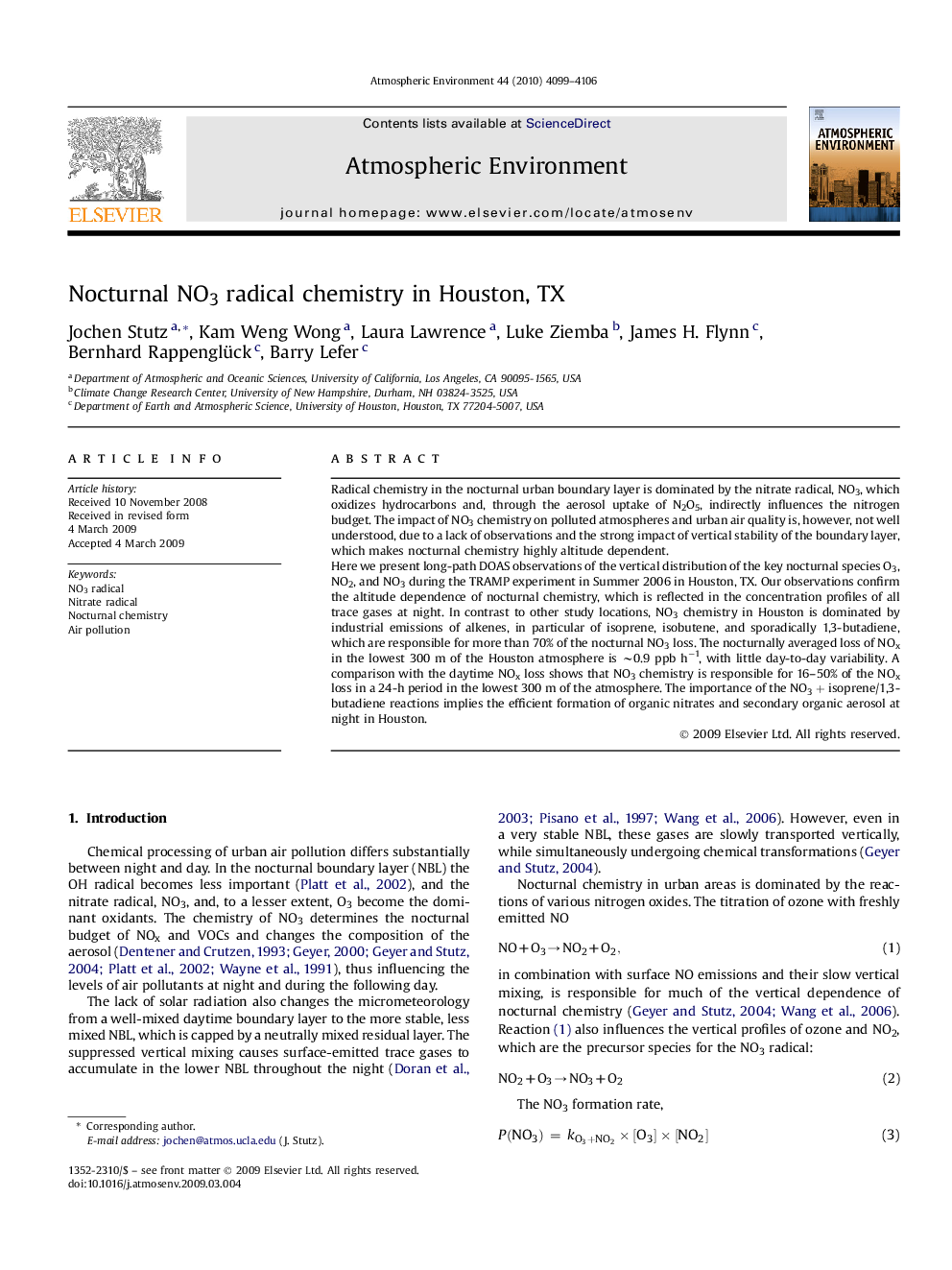| کد مقاله | کد نشریه | سال انتشار | مقاله انگلیسی | نسخه تمام متن |
|---|---|---|---|---|
| 4440598 | 1311067 | 2010 | 8 صفحه PDF | دانلود رایگان |

Radical chemistry in the nocturnal urban boundary layer is dominated by the nitrate radical, NO3, which oxidizes hydrocarbons and, through the aerosol uptake of N2O5, indirectly influences the nitrogen budget. The impact of NO3 chemistry on polluted atmospheres and urban air quality is, however, not well understood, due to a lack of observations and the strong impact of vertical stability of the boundary layer, which makes nocturnal chemistry highly altitude dependent.Here we present long-path DOAS observations of the vertical distribution of the key nocturnal species O3, NO2, and NO3 during the TRAMP experiment in Summer 2006 in Houston, TX. Our observations confirm the altitude dependence of nocturnal chemistry, which is reflected in the concentration profiles of all trace gases at night. In contrast to other study locations, NO3 chemistry in Houston is dominated by industrial emissions of alkenes, in particular of isoprene, isobutene, and sporadically 1,3-butadiene, which are responsible for more than 70% of the nocturnal NO3 loss. The nocturnally averaged loss of NOx in the lowest 300 m of the Houston atmosphere is ∼0.9 ppb h−1, with little day-to-day variability. A comparison with the daytime NOx loss shows that NO3 chemistry is responsible for 16–50% of the NOx loss in a 24-h period in the lowest 300 m of the atmosphere. The importance of the NO3 + isoprene/1,3-butadiene reactions implies the efficient formation of organic nitrates and secondary organic aerosol at night in Houston.
Journal: Atmospheric Environment - Volume 44, Issue 33, October 2010, Pages 4099–4106